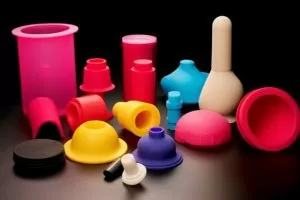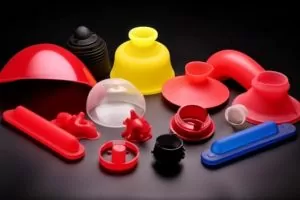Introduction
Rubber coloring requires a little experience and basic knowledge of color composition. Colors are basically composed of three primary colors. There are special standard numbers for buying natural color cards, and there are also color compositions and ratios, but this can only be used as a reference in the general direction, because the color masterbatch is not The same, the base material is also different, plus the rubber still needs to be vulcanized, and it will change after high temperature. If sulfur is added, it will turn yellowish. Some accelerators and anti-aging agents will also have an impact on creating different colors, which requires professional knowledge and rich experience.

Color sense is also very important. Some people adjust colors quickly and their senses are very keen. Of course, the more you adjust, the more practice makes perfect. Sometimes it is easy to find a product whose color is close to that of the sample in the general direction, and the composition of the rubber material is also the same. You can fine-tune it three or five times and you can get it right. It’s really annoying sometimes when you switch and I don’t feel anything.
Common color mixing methods for silicone rubber products
Solution color mixing
This method is to dissolve silicone rubber into a solution of a certain concentration with its good solvent, then add toner and liquid silicone rubber compounding agents except sulfur into the solution, stir and mix evenly, dry at a certain temperature to remove the solvent, and finally in Add sulfur to produce the rubber mixing machine. The operation is complex, the dispersion is uneven, there is color difference, the solvent is difficult to recover, and it pollutes the environment, so it is rarely used.
Color mixing method
This method is currently the most commonly used method for injection molding coloring silicone products. It is to add the toner directly or mix it with the carrier first and then add it to the rubber compound, and mix it evenly through the rubber mixer to color the silicone rubber. The specific methods are as follows.
Dry powder coloring
Directly add the powdery toner and small ingredients into the silicone rubber and mix on the open mill. The advantages are simple operation and low cost, but it is dusty during mixing, pollutes the environment, is not easy to disperse evenly, and has color differences. If the particles are too hard and too thick, it will cause quality problems such as custom colors spots, stripes or mutual contamination of the chromatogram, so it is rarely used.

Color paste color mixing
First mix the toner with the liquid compounding agent (such as plasticizer), grind it with a three-roller machine to form a paste or slurry, and then add it to the silicone rubber in a certain proportion for mixing. This method can avoid dust flying, help the toner disperse in the rubber, and achieve uniform color. However, the content of toner in the color paste is low, the toning is not high, the transportation volume is large, the loss is large, and it is inconvenient for users to use.
Granular color mixing
There are two main methods for preparing toner pellets. The first method is the same as other powdery compounding agent granulation methods. The powdery toner is first soaked with surfactant, and then melted with wax or melted with resin and extruded to granulate; the second method is to After the agent is soaked with surfactant, the toner particles are refined by mechanical force to form a dispersion of a certain concentration, which is then mixed with latex and co-precipitated, dried and then rolled or molded into granules.
Granular toner is easy to use, has good dispersion, no flying dust, does not pollute the environment, has bright color, uniform color development, and no color difference. It is a promising color stability mixing method. However, the preparation process of granular toner is complex and the cost is high, which limits its wide application.

Things to note when processing tinted silicone products
Whether the composition and materials of the color glue meet the standards.
The color differences in many products and the appearance of color spots and variegated colors in the raw materials are mainly because the color glue component is not prepared properly!
During the mixing process
The mixing time of color glue and raw materials is too short, resulting in uneven color of the components of the product and large local color gradient!
During the product production process
The placement of raw materials results in material marks. This phenomenon is often caused by the backlog of product materials in one part of the the molding well. You can disperse the raw materials!
When mixing colors
the ratio of raw materials to color glue is not accurate. Generally speaking, the ratio of color glue to glue is 1:10. Therefore, during process control, it is necessary to control the mixture and weight of color glue and glue as accurately as possible to prevent discoloration. There is a change!

Conclusion
In the silicone rubber color matching process, the simpler the coloring pigments used, the better. If two colors can be matched, it is not advisable to use three colors, because adding too much pigment will cause “complementary colors” and make the match the color darker, especially colorants used in latex final product such as colored balloons and household gloves. Try not to use them. Three colors to avoid losing bright brightness. At the same time, when selecting pigments for silicone rubber color matching, attention should be paid to selecting varieties with similar heat resistance properties to avoid color changes caused by temperature changes during the vulcanization process due to large differences in heat resistance stability. The colorant selected for latex should also be adjusted to consider the alkali resistance and dispersion of the color.
Silicone rubber color matching is an indispensable link in the production and manufacture of silicone rubber finished product. It is highly technical and experiential and requires long-term practice and accumulation. It’s a good idea to create a sample database of swatches for a wide range of used pigments, stains, and formulated stains. Rubber samples and colored rubber materials currently produced should be archived and stored separately for future comparison and use, and to minimize color differences between different batches of colored rubber materials of the same manufacturer and formula. Although rubber color matching technology is complicated, as long as we have a serious and rigorous work attitude, learn more about the performance, dosage, compatibility and dispersion of various pigments and colorants with rubber, as well as environmental safety, and do more experiments, we will be able to Comprehensive mastery of larger quantity rubber color matching technology.



